What can a fish tell you about its lake? If it’s a brook stickleback, banded killfish, or tadpole madtom, it might tell you that your lake is clean, rich in oxygen, and filled with healthy native plants. If you meet a Johnny darter, Iowa darter, or least darter, they might also tell you that your shoreline is in great condition and that the bottom of the lake (the benthic zone) is too. Though common and easy to catch, yellow perch actually have plenty to say as well. If you hold them up close to your ear just before you release them back into the water, they’ll quietly whisper sweet nothings about woody structure and the complexity of your lake’s habitat.
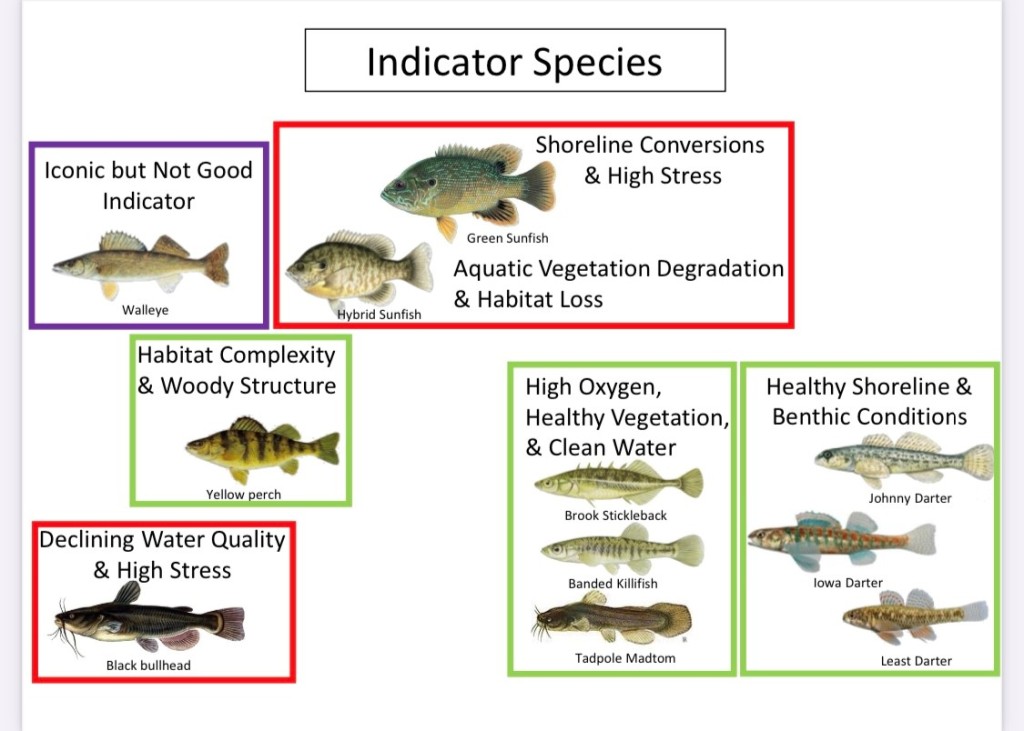
Sometimes, however, fish can be the bearers of bad news. Green and hybrid sunfish are delightful, but if they’re the only fish that you’re catching, they might be trying to tell you that your lake is stressed out due to shoreline and aquatic habitat loss. It’s a better sign if you’re also catching bluegills and pumpkinseeds, since those species are less tolerant of turbidity (brown water) and low dissolved oxygen that their cousins. Black bullheads (native) and common carp (invasive) can be unwelcome party guests in your local lake as well. When water quality declines and other species get too stressed to survive, bullheads and carp often take over and can make the situation even worse.
“If you talk to anyone who lives on a lake and ask them, ‘Do you like mosquitoes? How about biting gnats and no-see-ums?’ They will obviously tell you no,” explains Tom Langer, a biologist and riparian permit specialist with the Carnelian-Marine-St. Croix Watershed District. “Unfortunately, however, we’re seeing more and more people removing the vegetation along their shorelines and it’s causing a chain reaction in the aquatic food web that’s affecting fish, as well as insects and other wildlife.”
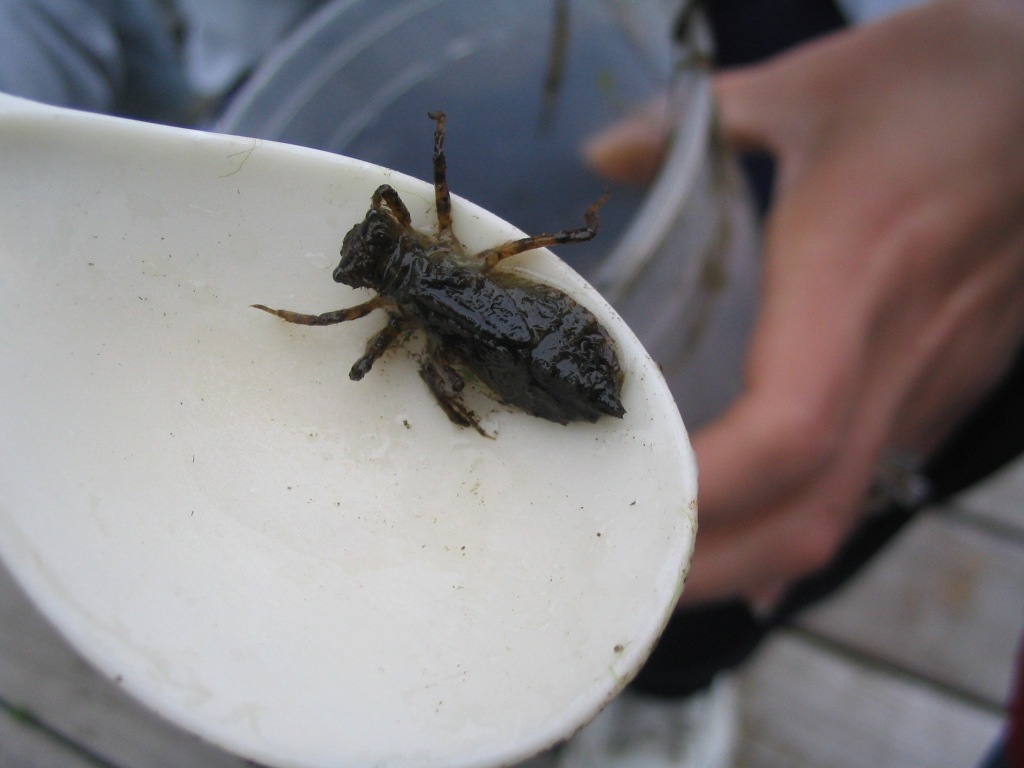
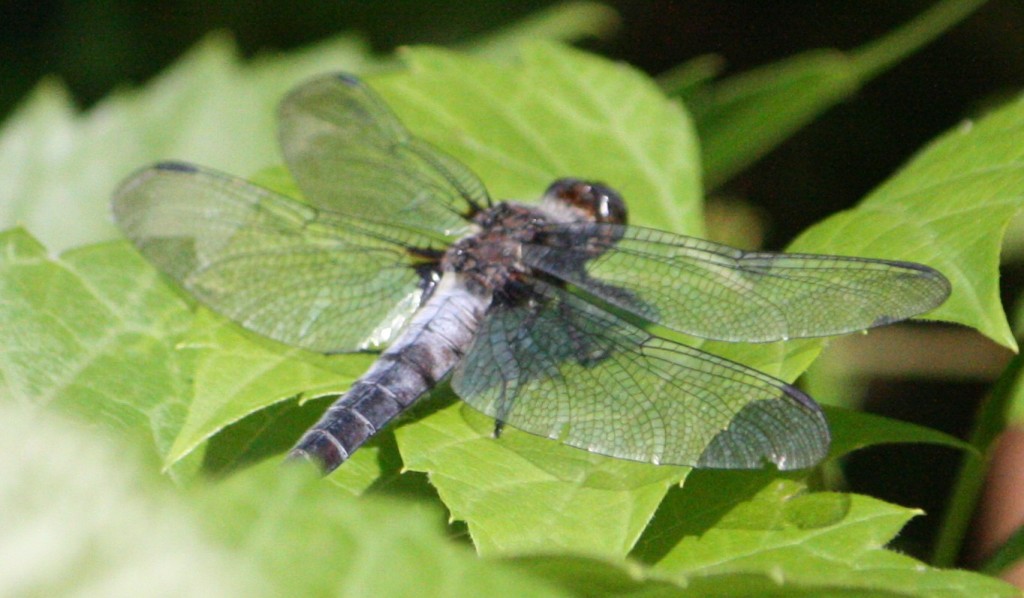
During a Shoreline Contractor Workshop on March 4, Langer talked about the science of fish and healthy lakes and highlighted dragonflies as an example. Adult dragonflies lay their eggs in the water and their nymphs continue to live underwater for as long as two years before climbing out onto the leaves and stems of near-shore vegetation, emerging, and then flying off to start eating mosquitoes. If you remove too much shoreline vegetation, you see a decline in the number of dragonflies, which translates into less food for fish in the lake and less predators available to eat the mosquitoes, gnats, and no-see-ums we all hate.
“When we look at Minnesota as a whole, 52% of residential lakeshore lots have low quality shoreline habitat,” said Barbara Heitkamp, a water education specialist with the Lower St. Croix Watershed Partnership who also spoke at the workshop. “In Washington County, it’s even worse – 69% of the residential lots have low quality shoreline habitat.” As a result, there is less habitat for beneficial insects and fewer places for turtles, frogs, herons, loons, and even otters to live.
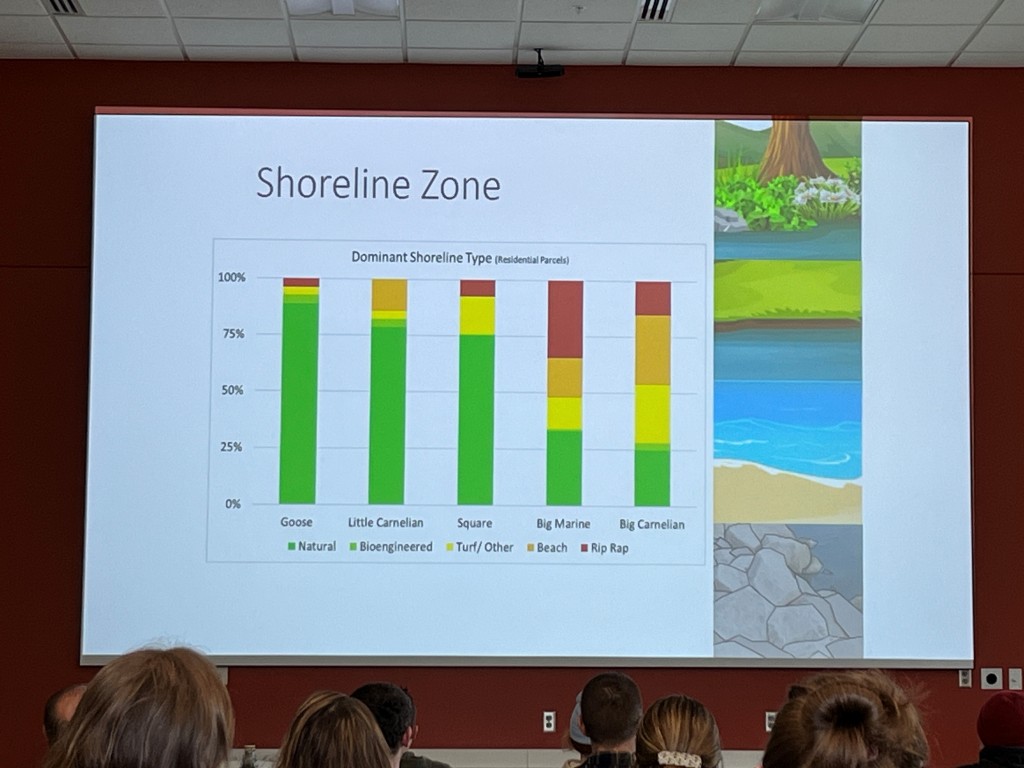
The Minnesota Department of Natural Resources (DNR) measures lake health by surveying fish and aquatic macroinvertebrates to create an Index of Biological Integrity (IBI). Between 2007 and 2019, Langer notes that Big Carnelian Lake’s IBI score dropped from 58 to 45, even as the lake maintained clear, clean water quality conditions. Similar changes have been observed at many other area lakes as well. In 2022, the Minnesota Pollution Control Agency officially added Lake Jane (Lake Elmo), Bone Lake (Scandia), and eight lakes in the Chisago Chain of Lakes to the state’s impaired waters list due to declining biodiversity and warned that Big Marine and Big Carnelian Lakes are also at risk.
One of the key ways that lakeshore landowners can help to protect fish and wildlife is by maintaining natural vegetation along 75% of their shoreline and planting trees, shrubs and native plants in their upland areas as well. During the Shoreline Contractor Workshop, landscape professionals learned strategies for incorporating these components into residential shoreline designs, and also discussed challenging situations, such as bluffs and elderly seawalls.

If you’re a lakeshore landowner in search of advice, you can find a good compilation of state and local resources at www.lsc1w1p.org/shorelines. Washington County residents can also sign-up for a free site-visit to access watershed cost-share grants and get advice on shoreline projects. Local watershed districts provide grants (often as large as $7500) to replace aging turf and crumbling shorelines with bioengineered designs that provide habitat and protect the water’s edge from erosion. As a complement to these grants, staff will also meet on-site with landowners and their contractors to provide advice on rules and permit requirements, and suggest strategies for successful projects.
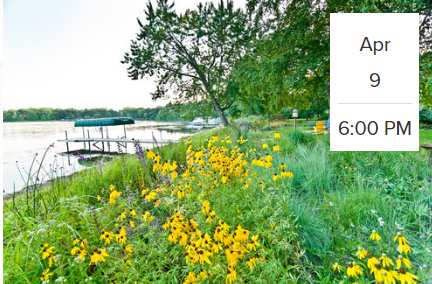
Lastly, the Blue Thumb – Planting for Clean Water partnership is also offering a Resilient Shorelines workshop (online) for the general public on Tuesday, April 9, 6-8pm. Register at bluethumb.org/event/resilient-shorelines-rcwd-vlawmo.
Talk to your local fish and find out what they want. Then get to work planting to give them a nice home!
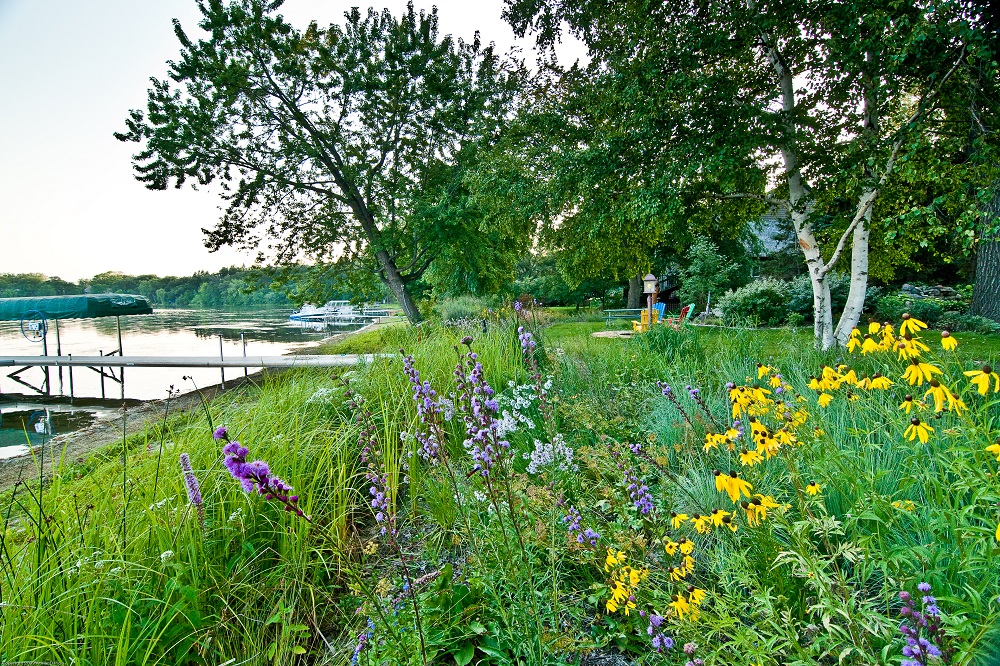
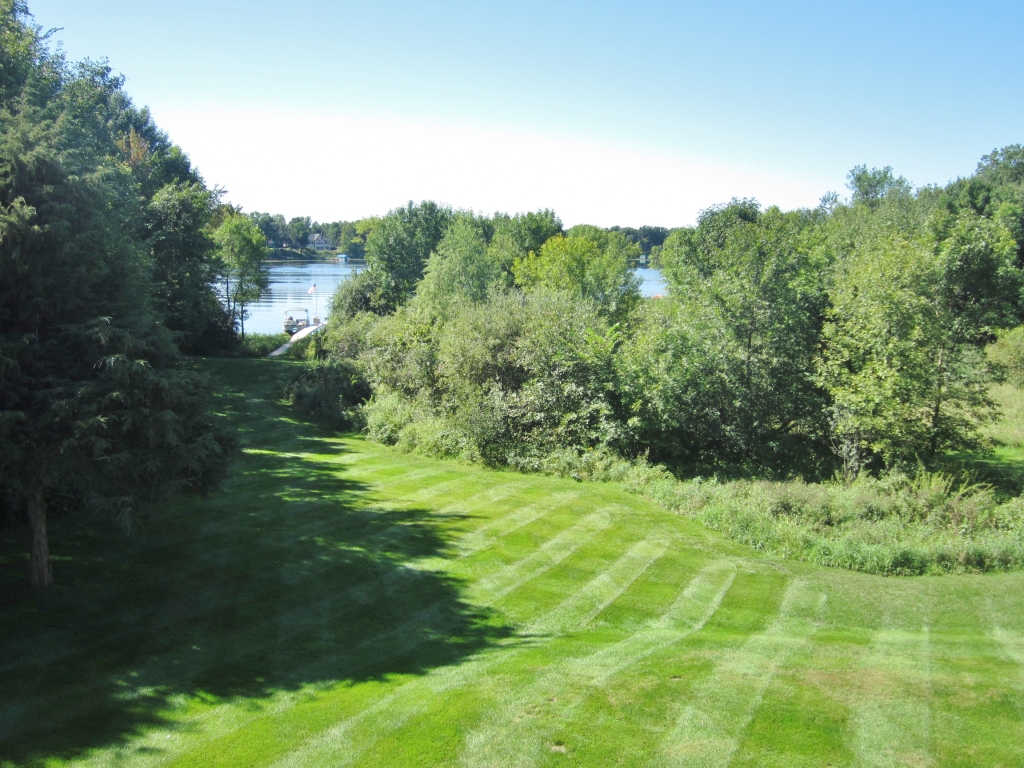
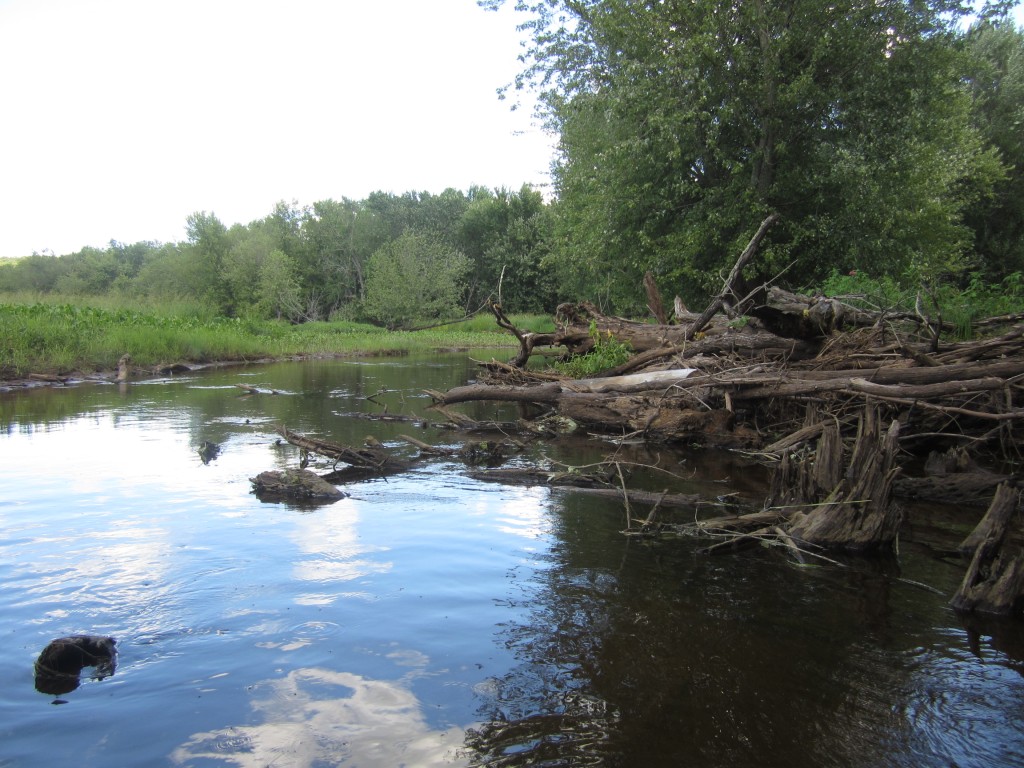
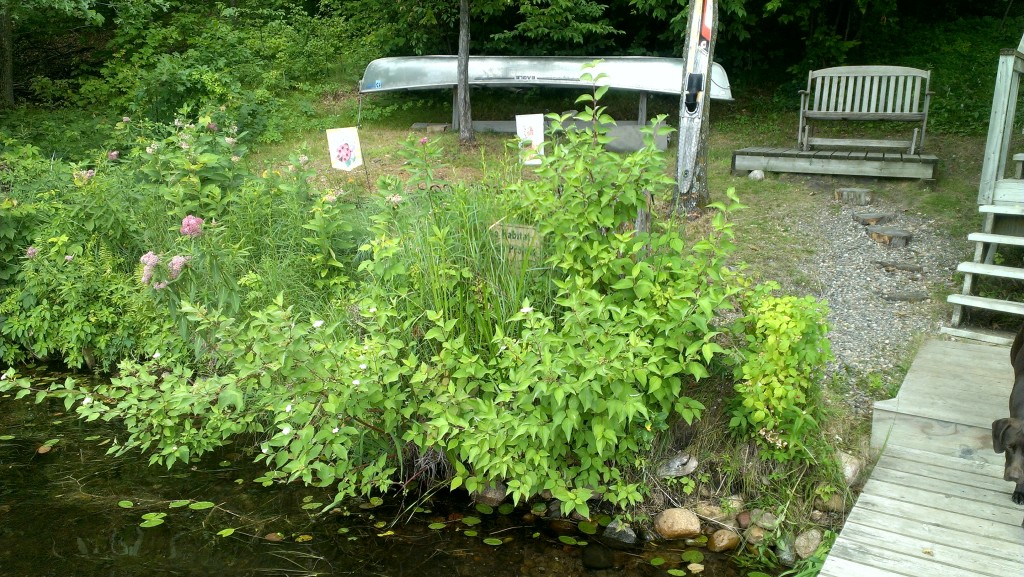

Do you own a cabin or home on a lake? Here are some helpful resources for you:
Minnesota DNR
- Lake Finder (Lake data and OHW elevation data)
- Restore Your Shore
- Score Your Shore
- Shoreline alteration info (including rip-rap, gravel beaches, etc)
- Public waters work permits
- Aquatic plant control permits
Lakeshore Landowner Resources
- REPORT: Minnesota’s Vanishing Natural Shorelines: A Loss that Contributes to Degraded Lake Quality (MN Natural Shoreline Partnership)
- 1pg handout: What to ask your Lakeshore Landscape Contractor
- For the Lake’s Sake: A how-to guide on project maintenance
- Native plant nurseries and landscapers
- Minnesota MPCA impaired waters map
- Blue Thumb – Planting for Clean Water
- **Plant selector tool; native plant suppliers and contractors; workshops and events; info on pollinator gardens, raingardens, shoreline plantings and turf alternatives
- Workshops, videos and resource links
- East Metro Lakes E-Update: Sign-up for our e-newsletter for lake associations and shoreline residents, delivered 4-6 times per year
Watershed Districts in Washington County
- *You can use the map on Washington Conservation District site visit sign-up form to determine which watershed a property is located in.
- Brown’s Creek Watershed District
- Carnelian-Marine-St. Croix Watershed District
- Comfort Lake – Forest Lake Watershed District (includes Comfort and Moody Lakes in Chisago Co as well)
- Middle St. Croix Watershed Management Organization
- Ramsey-Washington Metro Watershed District (includes portions of Ramsey Co as well)
- Rice Creek Watershed District (includes portions of Anoka, Hennepin and Ramsey Co as well)
- South Washington Watershed District
- Valley Branch Watershed District (includes Silver Lake in Ramsey Co as well)
Site visits and technical assistance
- SWCDs in greater Minnesota
- Anoka County – www.anokaswcd.org
- Chisago County – www.chisagoswcd.org
- Dakota County – https://dakotaswcd.org
- Hennepin County – www.hennepin.us/business/conservation/funding-assistance-natural-resources-projects#natural-resources-grants
- Isanti County – www.isantiswcd.org
- Pine County – www.pineswcd.com
- Ramsey County – www.ramseycounty.us/residents/environment/soil-water-conservation
- Washington County: www.mnwcd.org/site-visit-signup-form
